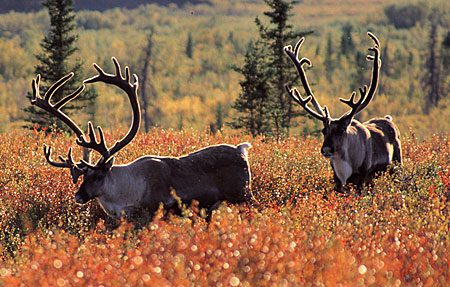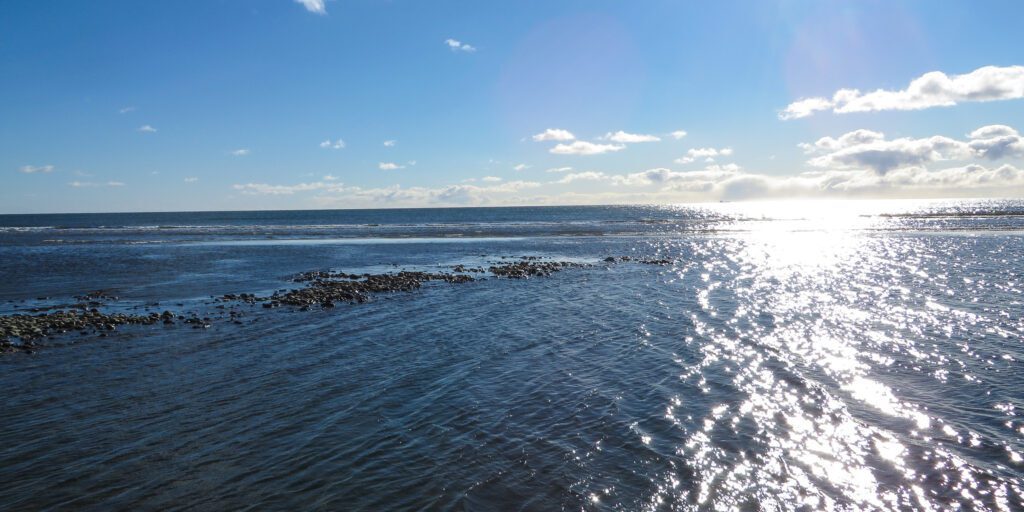Algal toxins are not new to Alaskan waters, but experts say their presence in low levels among marine life in the Bering Strait has not been seen in this northern region until recently.
During a workshop in Nome this week, hosted by the University of Alaska–Fairbanks’ Northwest Campus, scientists and residents alike discussed algal toxins’ role in the changing Bering Sea ecosystem.
KNOM’s Davis Hovey reports:
During the Algal Toxin Workshop on Tuesday, participants shared their knowledge about algal blooms and the biotoxins some of them produce. One scientist referenced a study from 2016, which found low levels of these algal toxins in all tested marine species, across all regions of Alaska. The levels were below concern: under the 80 milligrams of toxin per 100 grams of shellfish threshold set by the FDA.
“We analyzed about a thousand animals, representing 13 species: bowheads, all the different ice seals, otters, walrus, etc.”
That’s Kathi Lefebvre with the National Oceanic and Atmospheric Administration’s Wildlife Algal Toxins Research and Response Network (WARRN) – West Lab.
She explains there was not a specific reason for the samples the network of researchers collected; some were stranded animals and others were harvested by communities.
As Raphaela Stimmelmayr from the North Slope Borough puts it, scientists like her and Lefebvre are very interested in how algal blooms might be connected to the levels of toxins found in these animals.
They want to know if algal blooms are harming the marine wildlife populations that subsistence hunters rely on in Western Alaska and, if so, how will that affect food security.
So far, scientists have some information to say subsistence users are not in immediate danger, but not enough information to answer all of their questions.
According to Joe McLaughlin, a state epidemiologist, not all algal blooms are a threat, but some are deemed as Harmful Algal Blooms (HABs).
“HABs occur when colonies of algae grow out of control while producing toxic, or harmful effects on people, fish, shellfish, marine mammals and birds. Harmful Algal Blooms do adversely affect ecosystems, the health of animals and humans, as well as potentially affecting the economy with beach closures and shellfish harvest closures.”
As McLaughlin said, HABs contain high concentrations of algae that produce natural poisons known as biotoxins. One type of biotoxin that scientists are finding in various animals all over the Bering Sea, is saxitoxin. Although some animals are not affected by having saxitoxins present in their bodies, it can be toxic to humans by potentially causing Paralytic Shellfish Poisoning (PSP) if people consume the infected animals.
Julie Matweyou with Alaska Sea Grant in Kodiak says PSP has hindered the seafood industry in Alaska and cost the state money, although she couldn’t show that with an exact dollar amount.
“For example, in the Kodiak region, we do not have oyster and shellfish farms, mostly because of PSP. In order to step through the state biotoxin plan, you need to demonstrate toxin-free areas for 12 to 24 months, and in the Kodiak region, we always have those toxins present, so it’s very difficult.”
According to Matweyou’s research, two beaches in the Kodiak area half a mile away from each other had differing toxin levels.
Matweyou spoke during the Algal Toxin Workshop in Nome, along with several other scientists, about how variable the toxins’ concentration can be in different types of animals.
Dean Stockwell with UAF’s College of Fisheries and Ocean Sciences pointed to various shellfish retaining toxicity for varying periods of time.
“Shellfish process all of this differently. A blue mussel can be exposed to a high level of PSP; two weeks later, it has cleaned itself out, and it’s happy as a clam. A butter clam can be exposed at the same time, it doesn’t release that toxin, it doesn’t cleanse itself at the same time rate, so months later, it can still be a toxic clam.”
According to Stockwell, over the last few years, the Bering Strait has been transporting algal cells from the south to the north at increased rates. He cited research the Japanese vessel Natsuike released in 2017 that shows high concentrations of toxic algal cysts in the sediment of the northern Bering and Chukchi Seas.
Stockwell says the presence of these cysts could cause more biotoxins to be released into the Bering Strait ecosystem in the near future.
“We want to know what those autumn water temperatures are, because if they start getting above 6° Celsius, these guys can hatch, come back up into the surface, bloom again, put more cysts down… So, you can get this cyclic event of a (algal) bloom every year, perhaps if the water temperatures stay normal.”

Rick Thoman, a climatologist with the Alaska Center for Climate Assessment and Policy (ACCAP), says temperatures in the northern Bering Sea at the end of last week were warming up, getting into the upper 40s and the 50s Fahrenheit. According to Thoman, this is only one of many conditions needed to have algal blooms.
“Having water temperatures warm enough to support the algae that produce these is a necessary condition, but other pieces have to fall into place. Just because it’s warm, doesn’t mean there’s going to be (algal blooms), but if the waters were at their historically typical levels, there’s much lower risk of that.”
According to Lefevbre, later this summer, a network of researchers from Alaska, Seattle, and elsewhere, will be testing algal blooms’ impacts on a variety of marine life across the state, as they try to answer many questions related to subsistence populations.
However, once the thousands of samples are gathered, the scientists will need time, and money, to analyze them before they can share the results.
Image at top: looking out at the Bering Sea from East Beach in Nome. Photo: KNOM file.




